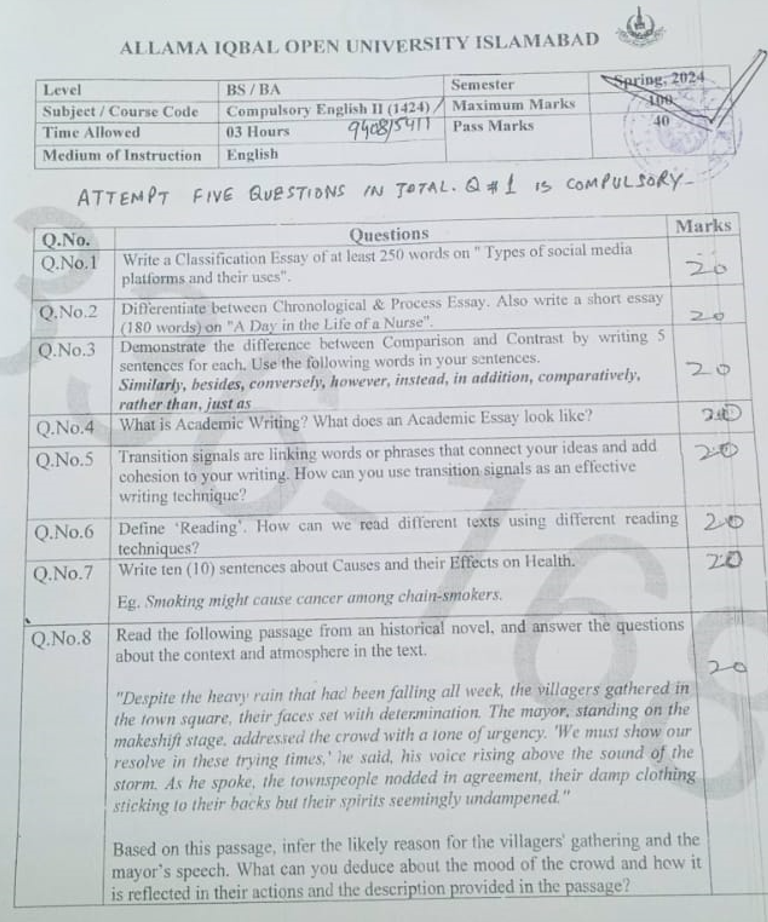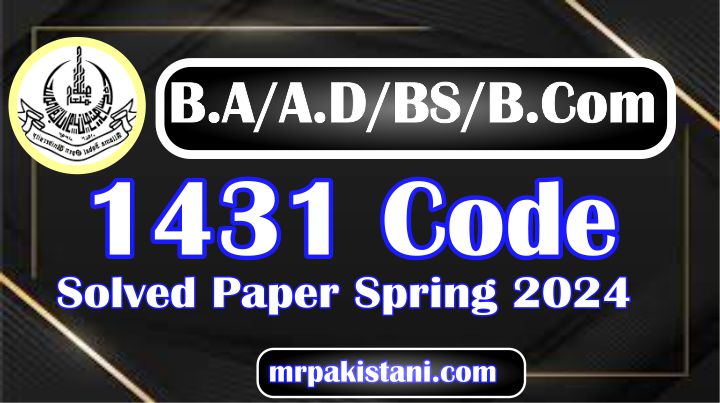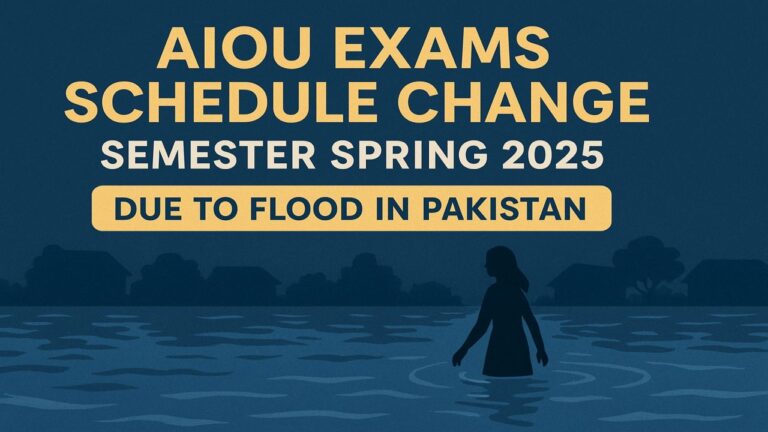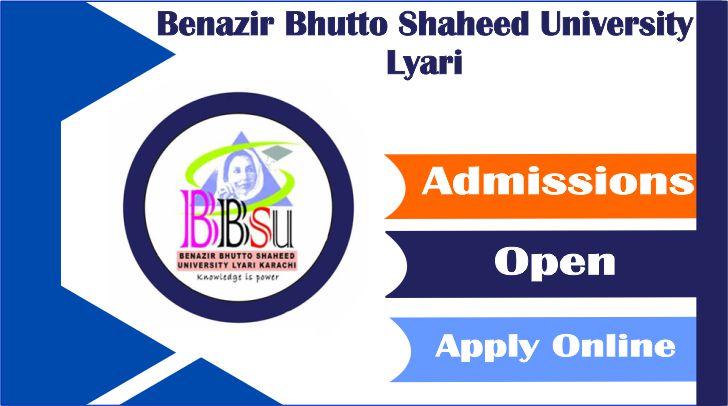AIOU 1424 Code Solved Paper Spring 2024 – English-II
The AIOU solved paper for Course Code 1424 – English-II for Spring 2024 is now available to assist BA/BS students in their exam preparation. This resource includes comprehensive answers to the expected questions, prepared according to the current AIOU syllabus and marking scheme. The content is easy to understand and written in clear English to match the medium of instruction. This solved paper is especially useful for those looking to improve their writing skills, grammar usage, and comprehension abilities before the final exams. It serves as a reliable study guide to boost confidence and academic performance.
| Level | BA/BS |
|---|---|
| Semester | Spring 2024 |
| Subject/Course Code | Compulsory English-II (1424) / 5411 / 9408 |
| Maximum Marks | 100 |
| Pass Marks | 40 |
| Medium of Instruction | Compulsory English |
| ATTEMPT ANY FIVE QUESTIONS. ALL CARRY EQUAL MARKS. | |
1424 / 5411 / 9408 Past Paper Spring 2024

1424 Code English-II Solved Paper Spring 2024
Question 1: Write a Classification Essay of at least 250 words on “Types of social media platforms and their uses”.
Answer:
Social media platforms have become an essential part of modern communication, entertainment, business, and learning. These platforms can be classified into several categories based on their primary purpose and usage. Understanding the types of social media and their uses can help individuals and businesses make the most of them.
1. Social Networking Platforms:
Examples: Facebook, LinkedIn
These platforms are primarily used for building personal and professional relationships. Facebook connects friends and families, while LinkedIn is designed for professional networking, job searching, and career development. They are also useful for groups, event promotion, and community building.
2. Media Sharing Platforms:
Examples: Instagram, YouTube, TikTok
These are used to share images, videos, and other multimedia content. Instagram and TikTok are more focused on visual and short-form content, whereas YouTube supports longer videos for education, entertainment, and tutorials.
3. Microblogging Platforms:
Examples: Twitter, Threads
These platforms are used to share brief messages, news updates, and opinions. They are ideal for real-time discussions, public conversations, and trending topics. Politicians, journalists, and influencers use them to interact with the public directly.
4. Discussion Forums and Communities:
Examples: Reddit, Quora
These platforms allow users to ask questions, share knowledge, and join topic-specific discussions. They are beneficial for problem-solving, learning, and discovering niche communities.
5. Messaging Apps:
Examples: WhatsApp, Messenger, Telegram
These apps focus on direct communication. They support private messaging, voice and video calls, and group chats, making them useful for personal and professional communication.
Conclusion:
Social media platforms serve various purposes—from staying connected with loved ones to building careers, sharing knowledge, and promoting businesses. Each type has unique strengths, and using them wisely can improve both personal and professional life.
Social media platforms have become an essential part of modern communication, entertainment, business, and learning. These platforms can be classified into several categories based on their primary purpose and usage. Understanding the types of social media and their uses can help individuals and businesses make the most of them.
1. Social Networking Platforms:
Examples: Facebook, LinkedIn
These platforms are primarily used for building personal and professional relationships. Facebook connects friends and families, while LinkedIn is designed for professional networking, job searching, and career development. They are also useful for groups, event promotion, and community building.
2. Media Sharing Platforms:
Examples: Instagram, YouTube, TikTok
These are used to share images, videos, and other multimedia content. Instagram and TikTok are more focused on visual and short-form content, whereas YouTube supports longer videos for education, entertainment, and tutorials.
3. Microblogging Platforms:
Examples: Twitter, Threads
These platforms are used to share brief messages, news updates, and opinions. They are ideal for real-time discussions, public conversations, and trending topics. Politicians, journalists, and influencers use them to interact with the public directly.
4. Discussion Forums and Communities:
Examples: Reddit, Quora
These platforms allow users to ask questions, share knowledge, and join topic-specific discussions. They are beneficial for problem-solving, learning, and discovering niche communities.
5. Messaging Apps:
Examples: WhatsApp, Messenger, Telegram
These apps focus on direct communication. They support private messaging, voice and video calls, and group chats, making them useful for personal and professional communication.
Conclusion:
Social media platforms serve various purposes—from staying connected with loved ones to building careers, sharing knowledge, and promoting businesses. Each type has unique strengths, and using them wisely can improve both personal and professional life.
Question 2: Differentiate between Chronological & Process Essay. Also write a short essay (180 words) on “A Day in the Life of a Nurse”.
Answer:
Difference Between Chronological and Process Essay:
Chronological Essay: A chronological essay presents events in the order they happened. It tells a story or explains a sequence by following time. This style is common in biographies, historical accounts, or narratives.
Process Essay: A process essay explains how something is done, created, or works. It follows a step-by-step approach and is used in instructional or technical writing, such as how to cook a recipe or build a model.
Short Essay: A Day in the Life of a Nurse
A nurse’s day is full of dedication, service, and challenges. She begins her shift by attending a briefing on patient updates. After putting on her uniform and sanitizing, she checks on each patient, takes vitals, and gives medicines. Throughout the day, she manages emergencies, updates charts, and comforts anxious patients. She also coordinates with doctors and families to ensure patients receive the right care. Even during stressful moments, she remains calm and composed. Lunch breaks are short, and often she eats quickly before returning to duty. Nurses also assist during surgeries, clean wounds, and monitor recovery closely. Despite fatigue, they keep smiling and show care to everyone. At the end of her shift, she hands over patient details to the next nurse, ensuring smooth continuity of care. Her role is crucial to the hospital and to society. A nurse’s day is not just about duties—it’s about compassion, strength, and saving lives. Truly, nurses are the silent heroes of healthcare.
Difference Between Chronological and Process Essay:
Chronological Essay: A chronological essay presents events in the order they happened. It tells a story or explains a sequence by following time. This style is common in biographies, historical accounts, or narratives.
Process Essay: A process essay explains how something is done, created, or works. It follows a step-by-step approach and is used in instructional or technical writing, such as how to cook a recipe or build a model.
Short Essay: A Day in the Life of a Nurse
A nurse’s day is full of dedication, service, and challenges. She begins her shift by attending a briefing on patient updates. After putting on her uniform and sanitizing, she checks on each patient, takes vitals, and gives medicines. Throughout the day, she manages emergencies, updates charts, and comforts anxious patients. She also coordinates with doctors and families to ensure patients receive the right care. Even during stressful moments, she remains calm and composed. Lunch breaks are short, and often she eats quickly before returning to duty. Nurses also assist during surgeries, clean wounds, and monitor recovery closely. Despite fatigue, they keep smiling and show care to everyone. At the end of her shift, she hands over patient details to the next nurse, ensuring smooth continuity of care. Her role is crucial to the hospital and to society. A nurse’s day is not just about duties—it’s about compassion, strength, and saving lives. Truly, nurses are the silent heroes of healthcare.
Question 3: Demonstrate the difference between Comparison and Contrast by writing 5 sentences for each. Use the following words in your sentences: Similarly, besides, conversely, however, instead, in addition, comparatively, rather than, just as.
Answer:
Comparison Sentences:
1. Dogs are loyal pets; similarly, cats can also form strong bonds with their owners.
2. Besides being good for health, walking is also a relaxing activity.
3. In addition to their beauty, roses are known for their pleasant fragrance.
4. Just as reading improves knowledge, writing enhances communication skills.
5. Comparatively, online learning offers more flexibility than traditional classrooms.
Contrast Sentences:
1. I wanted to go to the beach; however, it started raining.
2. Tea helps you relax; conversely, coffee keeps you awake.
3. Instead of going by car, she chose to ride a bicycle to reduce pollution.
4. Rather than blaming others, you should focus on solutions.
5. He loves spicy food; however, his brother prefers mild flavors.
Conclusion:
Comparison highlights similarities between two ideas or things, while contrast shows the differences. Both techniques help improve clarity and critical thinking in writing.
Comparison Sentences:
1. Dogs are loyal pets; similarly, cats can also form strong bonds with their owners.
2. Besides being good for health, walking is also a relaxing activity.
3. In addition to their beauty, roses are known for their pleasant fragrance.
4. Just as reading improves knowledge, writing enhances communication skills.
5. Comparatively, online learning offers more flexibility than traditional classrooms.
Contrast Sentences:
1. I wanted to go to the beach; however, it started raining.
2. Tea helps you relax; conversely, coffee keeps you awake.
3. Instead of going by car, she chose to ride a bicycle to reduce pollution.
4. Rather than blaming others, you should focus on solutions.
5. He loves spicy food; however, his brother prefers mild flavors.
Conclusion:
Comparison highlights similarities between two ideas or things, while contrast shows the differences. Both techniques help improve clarity and critical thinking in writing.
Question 4: What is Academic Writing? What does an Academic Essay look like?
Answer:
What is Academic Writing?
Academic writing is a formal style of writing used in universities, research institutions, and scholarly publications. It focuses on clarity, evidence-based arguments, structured formats, and objective tone. The purpose of academic writing is to inform, explain, or argue a point with proper reasoning and supporting evidence. It avoids personal opinions, slang, and informal expressions.
Key features of academic writing include:
1. Formal tone and vocabulary
2. Clear structure (introduction, body, conclusion)
3. Evidence-based arguments
4. Citations and references
5. Third-person point of view
What does an Academic Essay look like?
An academic essay is a structured piece of writing that presents a thesis (main idea) and supports it with logical reasoning, facts, and examples. It typically has the following structure:
1. Introduction: Introduces the topic, provides background information, and states the thesis statement.
2. Body Paragraphs: Each paragraph discusses a single point that supports the thesis, with evidence and explanation.
3. Conclusion: Summarizes the main points, restates the thesis in light of the discussion, and may suggest implications or future directions.
Academic essays can be descriptive, analytical, argumentative, or critical, depending on their purpose. They follow strict formatting and referencing guidelines like APA, MLA, or Chicago style.
Conclusion:
Academic writing and academic essays are essential tools for expressing knowledge, sharing research, and engaging in scholarly discourse. Mastery of this form helps students and researchers communicate effectively in the academic world.
What is Academic Writing?
Academic writing is a formal style of writing used in universities, research institutions, and scholarly publications. It focuses on clarity, evidence-based arguments, structured formats, and objective tone. The purpose of academic writing is to inform, explain, or argue a point with proper reasoning and supporting evidence. It avoids personal opinions, slang, and informal expressions.
Key features of academic writing include:
1. Formal tone and vocabulary
2. Clear structure (introduction, body, conclusion)
3. Evidence-based arguments
4. Citations and references
5. Third-person point of view
What does an Academic Essay look like?
An academic essay is a structured piece of writing that presents a thesis (main idea) and supports it with logical reasoning, facts, and examples. It typically has the following structure:
1. Introduction: Introduces the topic, provides background information, and states the thesis statement.
2. Body Paragraphs: Each paragraph discusses a single point that supports the thesis, with evidence and explanation.
3. Conclusion: Summarizes the main points, restates the thesis in light of the discussion, and may suggest implications or future directions.
Academic essays can be descriptive, analytical, argumentative, or critical, depending on their purpose. They follow strict formatting and referencing guidelines like APA, MLA, or Chicago style.
Conclusion:
Academic writing and academic essays are essential tools for expressing knowledge, sharing research, and engaging in scholarly discourse. Mastery of this form helps students and researchers communicate effectively in the academic world.
Question 5: Transition signals are linking words or phrases that connect your ideas and add cohesion to your writing. How can you use transition signals as an effective writing technique?
Answer:
Transition signals, also known as linking words or phrases, are essential tools in writing that help create smooth connections between ideas, sentences, and paragraphs. They guide the reader through your text by clearly indicating the relationship between different parts of your writing, such as cause and effect, contrast, comparison, addition, or sequence.
Effective Use of Transition Signals:
1. To Show Addition: Use signals like in addition, furthermore, also, moreover to add more information.
Example: “The new law helps reduce pollution. In addition, it promotes green energy use.”
2. To Show Contrast: Use words like however, on the other hand, nevertheless, conversely to show opposing ideas.
Example: “Ali enjoys outdoor activities. However, his brother prefers staying indoors.”
3. To Show Cause and Effect: Use therefore, as a result, consequently, because to explain relationships.
Example: “The roads were icy; therefore, all schools were closed.”
4. To Show Sequence: Use first, then, next, finally to organize steps or events.
Example: “First, gather all the ingredients. Then, preheat the oven to 180°C.”
5. To Compare: Use similarly, likewise, just as to show similarities.
Example: “Just as the sun sets in the west, the moon rises in the east.”
Conclusion:
Using transition signals effectively improves the clarity, flow, and logic of your writing. They help the reader follow your argument and understand how your ideas are connected, making your writing more coherent and professional.
Transition signals, also known as linking words or phrases, are essential tools in writing that help create smooth connections between ideas, sentences, and paragraphs. They guide the reader through your text by clearly indicating the relationship between different parts of your writing, such as cause and effect, contrast, comparison, addition, or sequence.
Effective Use of Transition Signals:
1. To Show Addition: Use signals like in addition, furthermore, also, moreover to add more information.
Example: “The new law helps reduce pollution. In addition, it promotes green energy use.”
2. To Show Contrast: Use words like however, on the other hand, nevertheless, conversely to show opposing ideas.
Example: “Ali enjoys outdoor activities. However, his brother prefers staying indoors.”
3. To Show Cause and Effect: Use therefore, as a result, consequently, because to explain relationships.
Example: “The roads were icy; therefore, all schools were closed.”
4. To Show Sequence: Use first, then, next, finally to organize steps or events.
Example: “First, gather all the ingredients. Then, preheat the oven to 180°C.”
5. To Compare: Use similarly, likewise, just as to show similarities.
Example: “Just as the sun sets in the west, the moon rises in the east.”
Conclusion:
Using transition signals effectively improves the clarity, flow, and logic of your writing. They help the reader follow your argument and understand how your ideas are connected, making your writing more coherent and professional.
Question 6: Define ‘Reading’. How can we read different texts using different reading techniques?
Answer:
Definition of Reading:
Reading is the process of recognizing, interpreting, and understanding written or printed language. It involves decoding symbols (letters and words) to derive meaning and comprehend the message intended by the author. Reading is a fundamental skill that enhances knowledge, communication, and critical thinking.
Reading Different Texts Using Different Techniques:
Different types of texts require different reading approaches depending on the purpose of reading and the nature of the content. Here are some common reading techniques:
1. Skimming: Quickly going through a text to get the general idea or gist. Useful for newspapers, articles, or when previewing a chapter.
2. Scanning: Looking for specific information or keywords. Commonly used in dictionaries, indexes, or searching for a date or name.
3. Intensive Reading: Reading in detail to understand deeper meaning, structure, vocabulary, and grammar. Ideal for academic texts, literature, and textbooks.
4. Extensive Reading: Reading for pleasure or general understanding, such as novels, magazines, or stories. It helps improve fluency and vocabulary.
5. Critical Reading: Evaluating and analyzing a text to form an opinion or judgment. Useful in essays, research papers, and argumentative articles.
Conclusion:
By using appropriate reading techniques based on the type and purpose of the text, readers can enhance comprehension, save time, and develop better learning strategies.
Definition of Reading:
Reading is the process of recognizing, interpreting, and understanding written or printed language. It involves decoding symbols (letters and words) to derive meaning and comprehend the message intended by the author. Reading is a fundamental skill that enhances knowledge, communication, and critical thinking.
Reading Different Texts Using Different Techniques:
Different types of texts require different reading approaches depending on the purpose of reading and the nature of the content. Here are some common reading techniques:
1. Skimming: Quickly going through a text to get the general idea or gist. Useful for newspapers, articles, or when previewing a chapter.
2. Scanning: Looking for specific information or keywords. Commonly used in dictionaries, indexes, or searching for a date or name.
3. Intensive Reading: Reading in detail to understand deeper meaning, structure, vocabulary, and grammar. Ideal for academic texts, literature, and textbooks.
4. Extensive Reading: Reading for pleasure or general understanding, such as novels, magazines, or stories. It helps improve fluency and vocabulary.
5. Critical Reading: Evaluating and analyzing a text to form an opinion or judgment. Useful in essays, research papers, and argumentative articles.
Conclusion:
By using appropriate reading techniques based on the type and purpose of the text, readers can enhance comprehension, save time, and develop better learning strategies.
Question 7: Write ten (10) sentences about Causes and their Effects on Health.
Answer:
1. Smoking might cause cancer among chain-smokers.
2. Excessive consumption of junk food can lead to obesity and heart disease.
3. Lack of physical activity often results in poor cardiovascular health.
4. Constant stress may cause high blood pressure and mental health disorders.
5. Insufficient sleep can affect the immune system and increase the risk of chronic diseases.
6. Excessive screen time may lead to eye strain and sleep disturbances.
7. Consuming too much sugar can contribute to the development of diabetes.
8. Poor hygiene practices might cause bacterial infections and skin diseases.
9. Drinking contaminated water can lead to serious illnesses like cholera or typhoid.
10. Overuse of painkillers may result in kidney or liver damage.
1. Smoking might cause cancer among chain-smokers.
2. Excessive consumption of junk food can lead to obesity and heart disease.
3. Lack of physical activity often results in poor cardiovascular health.
4. Constant stress may cause high blood pressure and mental health disorders.
5. Insufficient sleep can affect the immune system and increase the risk of chronic diseases.
6. Excessive screen time may lead to eye strain and sleep disturbances.
7. Consuming too much sugar can contribute to the development of diabetes.
8. Poor hygiene practices might cause bacterial infections and skin diseases.
9. Drinking contaminated water can lead to serious illnesses like cholera or typhoid.
10. Overuse of painkillers may result in kidney or liver damage.
Question 8:
Read the following passage from a historical novel, and answer the questions about the context and atmosphere in the text.
“Despite the heavy rain that had been falling all week, the villagers gathered in the town square, their faces set with determination. The mayor, standing on the makeshift stage, addressed the crowd with a tone of urgency. ‘We must show our resolve in these trying times,’ he said, his voice rising above the sound of the storm. As he spoke, the townspeople nodded in agreement, their damp clothing sticking to their backs but their spirits seemingly undampened.”
Read the following passage from a historical novel, and answer the questions about the context and atmosphere in the text.
“Despite the heavy rain that had been falling all week, the villagers gathered in the town square, their faces set with determination. The mayor, standing on the makeshift stage, addressed the crowd with a tone of urgency. ‘We must show our resolve in these trying times,’ he said, his voice rising above the sound of the storm. As he spoke, the townspeople nodded in agreement, their damp clothing sticking to their backs but their spirits seemingly undampened.”
- What is the likely reason for the villagers’ gathering?
- What is the purpose of the mayor’s speech?
- How can you describe the mood of the crowd?
- How is that mood reflected in their actions and the setting?
Answer:
1. The villagers have likely gathered to respond to a significant challenge or crisis threatening their community, such as war, injustice, or hardship caused by ongoing events.
2. The mayor’s speech is meant to inspire unity, perseverance, and courage. His urgent tone implies a call to collective action in the face of adversity.
3. The mood of the crowd is resolute and courageous. Despite discomfort from the heavy rain, they remain committed and undeterred.
4. This mood is reflected through their physical presence despite the rain, their attentive response to the mayor, and the descriptive language showing their “faces set with determination” and “spirits seemingly undampened.” These elements create an atmosphere of unity, strength, and hope.
1. The villagers have likely gathered to respond to a significant challenge or crisis threatening their community, such as war, injustice, or hardship caused by ongoing events.
2. The mayor’s speech is meant to inspire unity, perseverance, and courage. His urgent tone implies a call to collective action in the face of adversity.
3. The mood of the crowd is resolute and courageous. Despite discomfort from the heavy rain, they remain committed and undeterred.
4. This mood is reflected through their physical presence despite the rain, their attentive response to the mayor, and the descriptive language showing their “faces set with determination” and “spirits seemingly undampened.” These elements create an atmosphere of unity, strength, and hope.















